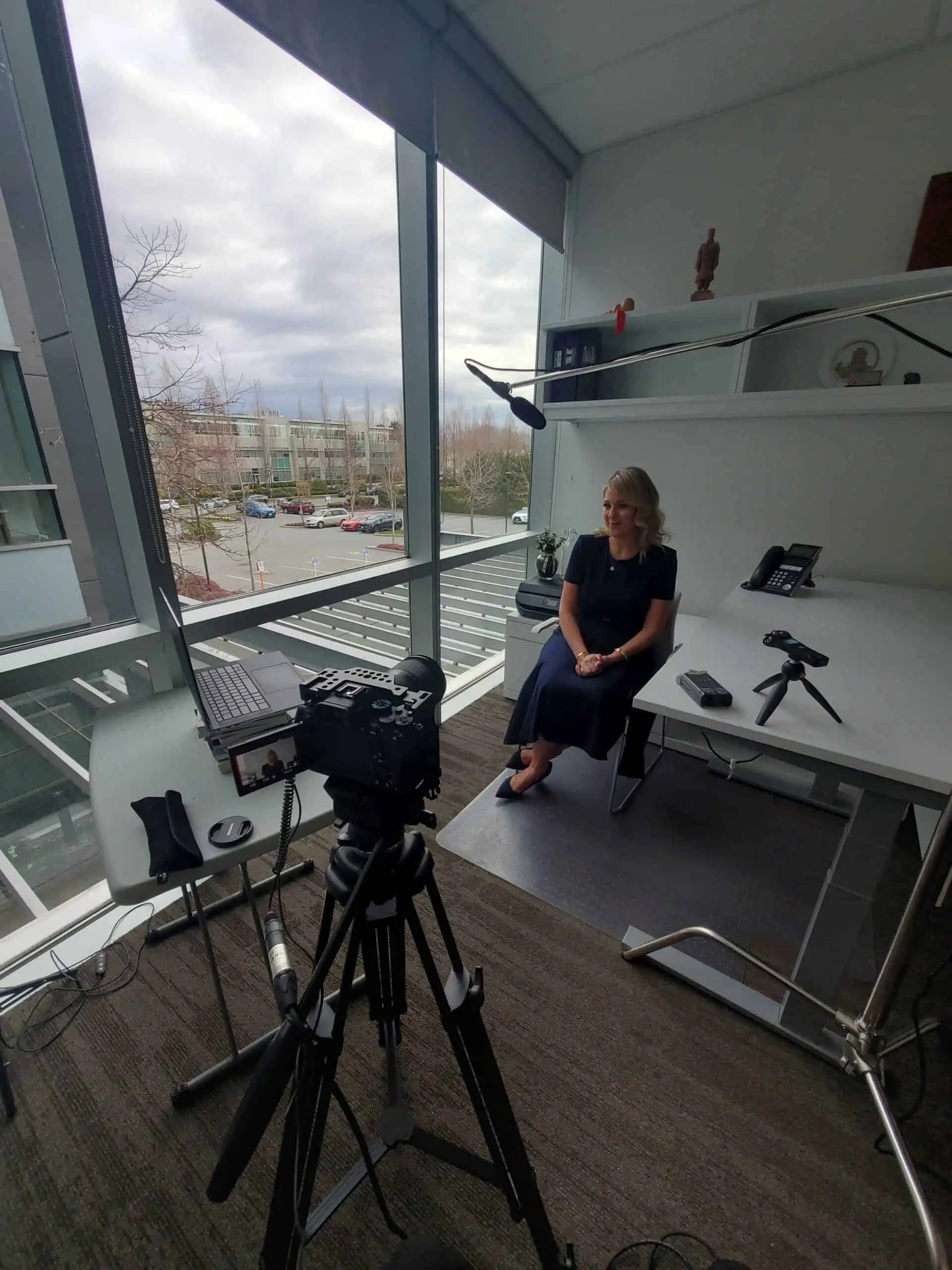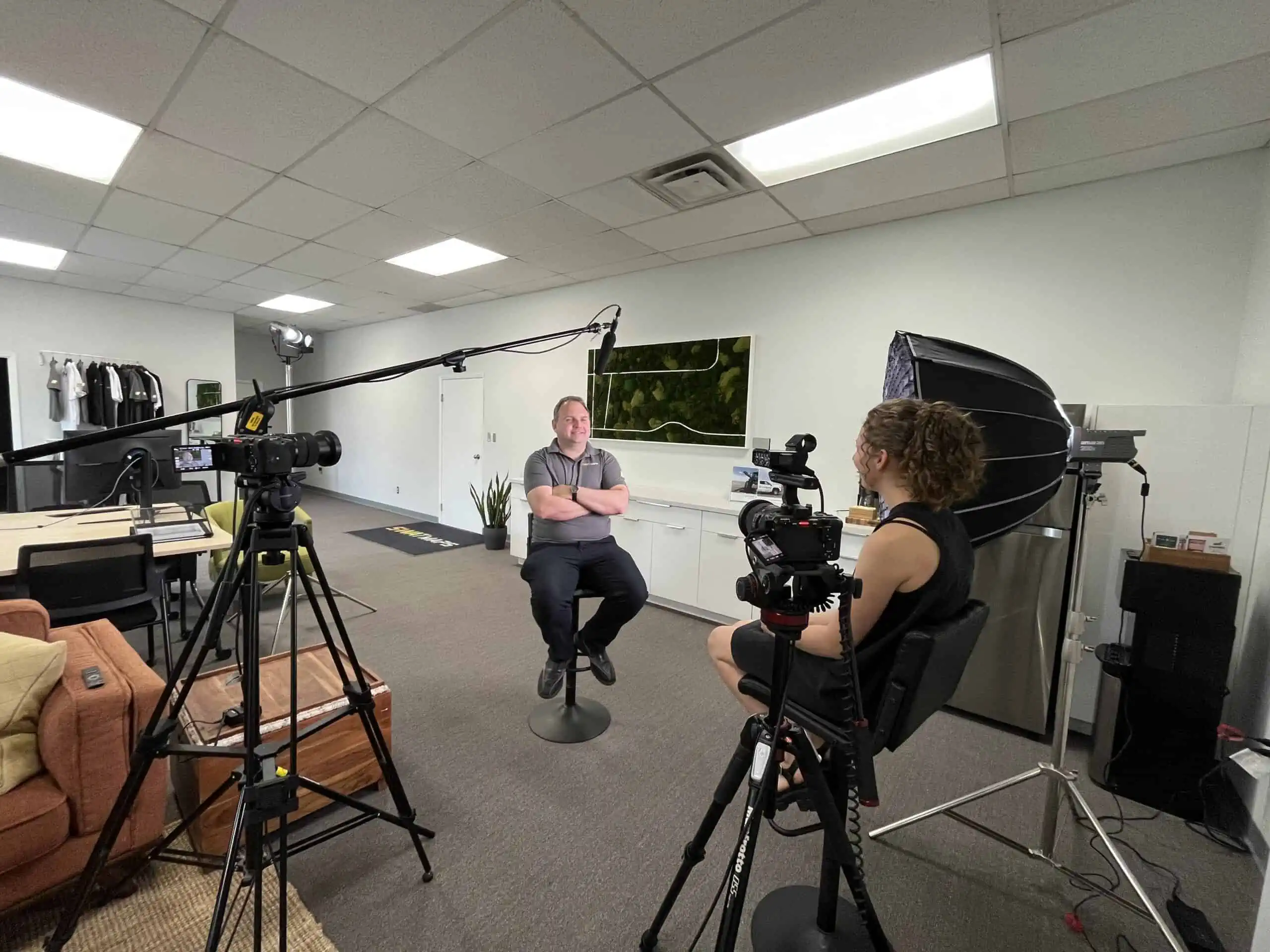Lighting and Audio Considerations for Filming Interviews
When setting up an interview to be filmed, ensuring optimal lighting and audio quality is crucial for creating a visually appealing and professionally sounding production. Proper lighting techniques can enhance the overall mood and aesthetics of the interview, while high-quality audio ensures that the message being conveyed is clear and easily understandable. In this blog post, we will explore various considerations for lighting and audio setups, providing options suitable for different budgets.
Lighting Considerations:
Natural Lighting:
Utilizing natural light can be an effective and cost-efficient option, especially if you have access to a well-lit room or space. Position the interviewee near a window, taking note of the time of day and angle of the sunlight to achieve a flattering and balanced look. Be aware of any potential shadows or harsh lighting conditions that may affect the shot.
Three-Point Lighting:
This classic lighting setup consists of three key elements: a key light, a fill light, and a backlight. The key light serves as the primary source, illuminating the subject’s face, while the fill light softens shadows and balances the overall lighting. The backlight adds depth and separation from the background. Using affordable LED light kits or even desk lamps can create a basic three-point lighting setup, offering versatility and control over the interview’s visual appeal.
Budget-Friendly Lighting Options:
- Softbox Lighting Kits: These affordable kits provide diffused and even lighting, minimizing shadows and harsh contrasts. They are easy to set up and offer adjustable brightness levels, making them suitable for various interview scenarios.
- Ring Lights: Ideal for solo interviews or close-ups, ring lights are affordable and provide a soft, even illumination. They are compact, portable, and often offer adjustable color temperatures, allowing for customization based on the interview’s mood.
Audio Considerations:
External Microphones:
- Lavalier Microphones: These small, clip-on microphones are commonly used in interviews for their convenience and ability to capture clear audio directly from the interviewee. Wired or wireless options are available depending on budget and mobility requirements. Always make sure that the wire is under the shirt and the mic is positioned as subtly as possible.
- Shotgun Microphones: These directional microphones capture sound from a specific direction, minimizing ambient noise and focusing on the subject. They can be mounted on the camera or held on a boom pole, offering flexibility in capturing high-quality audio.
Audio Recording Devices:
- Portable Audio Recorders: Devices such as the Zoom H4n or Tascam DR-40 offer excellent audio quality and flexibility. They can be used with external microphones and provide control over levels and settings.
- Smartphone Apps: Budget-friendly options include recording audio using dedicated smartphone apps, such as Voice Memos for iOS or Voice Recorder for Android. While not as professional as dedicated recorders, they can still deliver satisfactory results when paired with an external microphone.





Lighting and audio considerations are vital elements when setting up an interview to be filmed. By selecting the appropriate lighting techniques and audio equipment based on your budget, you can elevate the production quality and ensure the message is conveyed clearly and professionally. Whether utilizing natural lighting or investing in affordable lighting kits and microphones, these considerations will greatly contribute to a visually appealing and sonically pleasing interview.